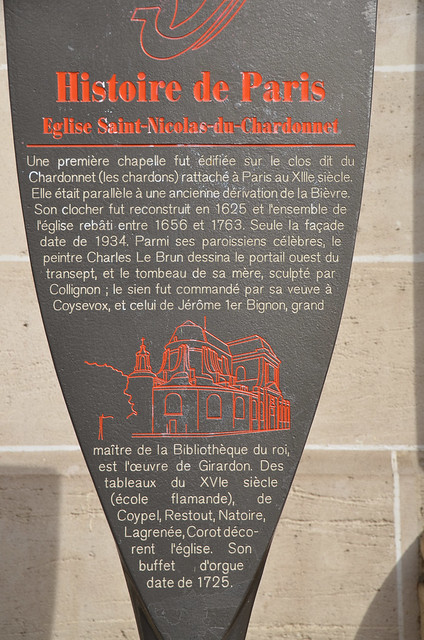Eglise Saint-Nicolas-du-Chardonnet. Une première chapelle fut édifiée sur le clos dit du Chardonnet (les chardons) rattaché à Paris au XIIIe siècle. Elle était parallèle à une ancienne dérivation de la Bièvre. Son clocher fut reconstruit en 1625 et l'ensemble de l'église rebâti entre 1656 et 1763. Seule la façade date de 1934. Parmi ses paroissiens célèbres, le peintre Charles Le Brun dessina le portail ouest du transept, et le tombeau de sa mère, sculpté par Collignon; le sien fut commandé par sa veuve à Coysevox, et celui de Jérôme 1er Bignon, grand maître de la Bibliothèque du roi, est l'oeuvre de Girardon. Des tableaux du XVIe siècle (école flamande), de Coypel, Restout, Natoire, Lagrenée, Corot décorent l'église. Son buffet d'orgue date de 1725.
rue Monge at the corner of rue des Bernardins, Paris
Google Streetview
OpenStreetMap
Subjects
None identified yet. Subjects are curated by hand so please bear with us.

